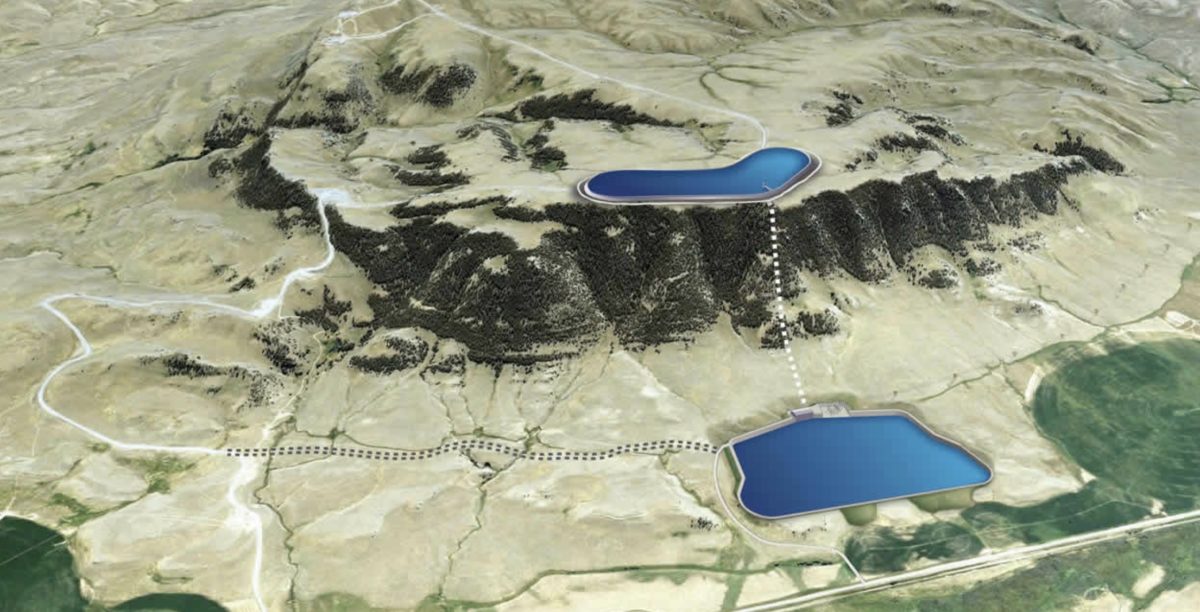A 400 MW pumped hydro project in Montana has received an equity investment from Copenhagen Infrastructure Partners (CIP).
While the technical potential of closed-loop pumped hydro storage is an estimated 500,000 sites worldwide, the cost of pumped hydro, especially as it compares to the cost of battery storage, remains an issue. One study found that pumped hydro storage with more favorable financing could compete with batteries, while a study from the National Renewable Energy Laboratory is forthcoming.
CIP’s investment indicates that the renewables-focused investment firm has determined that this particular project will pay off.
CIP Senior Partner Christian Skakkebaek described pumped hydro storage in a press release as:
a unique and valuable asset class that will be a key resource as the global transition to renewable energy continues to accelerate in states such as Montana.”
With CIP’s long investment horizon, Mr. Skakkebaek added that the fund is able to “participate in large projects overseeing financing, construction and operation.”
In a possible nod to the capability of pumped hydro storage to balance renewable generation, the project partners state in their press release that the facility “will be a carbon neutral alternative to the types of natural gas facilities that many of the region’s energy providers are contemplating—and at a lower cost.”
The project, which has a license for construction and operation, is designed to generate 3400 MWh of electricity in 8½ hours, and then take 10 hours to pump the water back uphill from the lower reservoir to the upper one, said Carl Borgquist, president of project owner Absaroka Energy.
The project location, near Martinsdale, Montana in the center of the state, has good solar resources, with direct normal solar irradiation averaging 4.5 to 5.0 kWh per square meter per day, plus diffuse radiation refracted by clouds.
Following CIP’s investment, CIP will “finalize the project development and step into the role of the project’s long-term sponsor equity provider,” says the press release, with the remainder of the capital structure to be determined prior to start of construction. The amount of CIP’s initial investment was not specified.
The Gordon Butte pumped hydro project site is within six miles of its interconnection to the Colstrip twin 500 kV transmission lines—described in the press release as “the backbone of the Pacific Northwest’s electric system.” Pump and turbine equipment will be provided by GE Renewable Energy.
The Gordon Butte project timeline goes back at least six years, as FERC issued a preliminary permit in 2013. The project will be “ready for construction” in 2020, states the press release. Further details are provided on a project website.
This content is protected by copyright and may not be reused. If you want to cooperate with us and would like to reuse some of our content, please contact: editors@pv-magazine.com.








So, each lake is 1,000×4,000ft – how much floating solar could they install on two 4,000,000sqft lakes?!
Roughly, 65MW peak using about 80% of the surface for maintenance and repair space for the solar PV field. It would depend on the actual design of the reservoir, IF it tapers one could expect less area to be available when the hydro storage has been used and the water level drops.
Pumped hydro like all ‘options’ has its pros and cons. How high is the water drop? The higher the drop, the larger the force and the more ‘specialized’ high strength piping will have to be installed at premium prices. This looks like a closed system, if so, how much water will need to be removed from the local aquifer to fill the reservoir and initial pipeline volume? How much make up water will be needed (on average) to account for evaporation? Forces of nature like flooding and flood flow silt filling in the capacity of the reservoir. What about invasive species like zebra and quagga mussels?